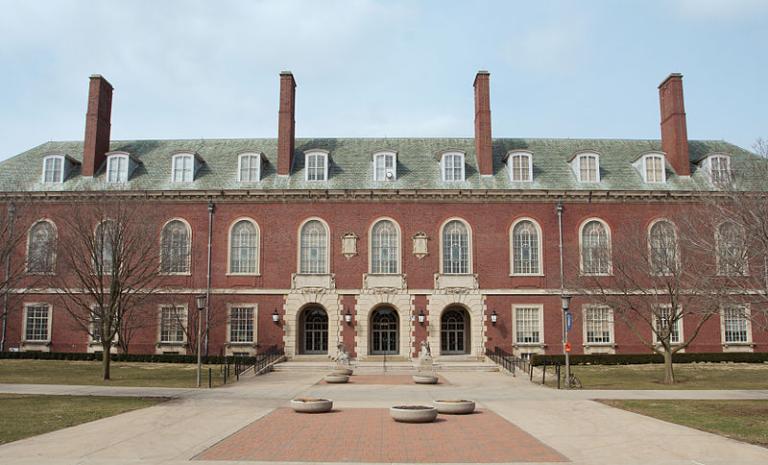
Here’s a “scandal” reported by ProPublica Illinois yesterday:
“Parents Are Giving Up Custody of Their Kids to Get Need-Based College Financial Aid,” with the subtitle/excerpt, “First, parents turn over guardianship of their teenagers to a friend or relative. Then the student declares financial independence to qualify for tuition aid and scholarships.”
Some excerpts:
Dozens of suburban Chicago families, perhaps many more, have been exploiting a legal loophole to win their children need-based college financial aid and scholarships they would not otherwise receive, court records and interviews show. . . .
Parents are giving up legal custody of their children during their junior or senior year in high school to someone else — a friend, aunt, cousin or grandparent. The guardianship status then allows the students to declare themselves financially independent of their families so they can qualify for federal, state and university aid, a ProPublica Illinois investigation found. . . .
While ProPublica Illinois uncovered this practice in north suburban Lake County, where almost four dozen such guardianships were filed in the past 18 months, similar petitions have been filed in at least five other counties and the practice may be happening throughout the country. ProPublica Illinois is still investigating. . . .
When filling out the application for financial aid, called the Free Application for Federal Student Aid, or FAFSA, students have to prove formal separation from their parents to qualify as an independent. One of the few ways to do that is through a legal guardianship change. Students cannot just declare financial independence — even in cases where parents are able to pay but refuse to do so, Borst said.
According to the U.S. Department of Education website, “a student in legal guardianship does not need to report parent information on the FAFSA form because he or she is considered an independent student.” Independent students are evaluated for financial aid based on their own income and resources and not that of their parents.
And here’s my reaction: good for them!
OK, maybe that’s going to far. But I have a hard time getting upset – I find the manipulation of finances that many families engage in to qualify their elder for Medicaid nursing home coverage, to be no different, and, unless I’m mistaken, that’s generally accepted as a “thing you have to do,” however unethical it is. (ElderLawAnswers.com provides a handy article, “How to Use a Trust in Medicaid Planning” about how to preserve an estate for children while still qualifying for Medicaid.)
The article does not report (and does not have access) to information on the family’s finances, though the students in question are attending public universities. They’re not seeking out the Harvards and Sarah Lawrences and other jaw-droppingly-expensive private colleges.
But the reality is this:
Prior to 1992, if your parents, despite a middle-class income, were unwilling to pay for your tuition or were unwilling to go into debt if they hadn’t saved for this purpose, you had a reasonable alternative: support yourself independently for two years (living in your own place and earning enough to pay for your expenses), then apply for financial aid as an “independent student.”
At that point, new rules were implemented. Any student under the age of 24 is deemed dependent on his/her parents, and their income must be included in the FAFSA, the financial aid form, with exceedingly narrow exceptions, including marriage, homelessness, literally uncontactable parents, jailed parents, or in case of abuse. A student whose parents refuse to complete the FAFSA has no financial aid options except unsubsidized loans (and, I recall, when I wrote the above-linked blogpost, the only advice for students in such a situation was, “beg and plead and tell them that it’s their moral responsibility to do so, and even if they won’t pay your tuition, they should at least disclose their income on the form”).
What’s more, the financial aid formulas calculate an Expected Family Contribution with a formula which ratchets up to expecting that families spend nearly 50% of “disposable income” on college tuition. (What follows is from a 2013 blogpost, so it’s possible that there’s been a significant change, but unlikely.) Specifically, after-tax income of $30,000 for a family of 5 is “protected,” the next $30,000 has applicable rates of from 22% to 40%, and starting at $60,000 (more or less; probably a bit higher due to inflation), 47% of the family income is expected to be usable for paying college tuition. In addition, parents are expected to be able to spend 1/8 of their non-pension assets, each year, on tuition. (This is not the same as liquidating your assets after 8 years of kids in college; it’s 1/8 of your current assets, then 1/8th of what’s left next year, and so on.)
Do parents really do this? Do they really cut back their finances by such incredible sums? I have a hard time believing it. It’s merely a way of allocating financial aid, and funneling middle-class kids into (unsubsidized) student loans/parental loans, because, when you do further reading, you immediately land on the advice that, gosh, if you can’t actually afford to pay the money that’s been deemed to be your EFC, then you’re invited to click the link to learn more about PLUS (parent) loans. Oh, and on top of that, in many schools indirectly and in some schools quite out-in-the-open, part of what those parents are paying for, are subsidies for their children’s classmates (see here and here).
Now, I do not mean to make the case that “this proves we need free tuition.” We need more and better ways to reduce the cost of college, and to reduce the perceived necessity of a 4 year degree (plus, increasingly, master’s degrees), enabling more young adults to enter the workforce after trade school, apprenticeships, 2 year degrees, or other forms of learning, plus better education at the high school level so that baseline communication/thinking skills are already in place, and the prescription of “do exactly what we’re doing now, except with the federal government funding everything,” is preposterous.
But such a system, with Expected Family Contributions that have no bearing to reality, certainly communicates that the EFC is not meant to be “real” at all, but is all simply part of a bigger game in how federal and “institutional” (that is, both segregated funds from donors and money from the general university budget) aid is allocated.
It’s also already widely known that universities play games in other ways. They engage in data-mining in order to identify which students should and shouldn’t be offered financial aid/merit scholarships. (I wrote about this back in 2014 and had the distinct impression, maybe from subsequent reading, that their data-mining extends even to the degree of assessing on which students a merit scholarship would be “wasted” because they’d have come anyway; various articles discussed strategies around “don’t list your first-choice college first, but play a little hard-to-get.”) The University of Chicago sent multiple postcards to my son who, really, was a fine student but not so stellar as to be University of Chicago material (sorry, kid, no offense), and we concluded that they were trying to manipulate their statistics: the more applications =more rejections = more prestige.
So, given this, it’s really hard to blame parents who view what they’re doing as simply “playing the game” as aggressively as the universities themselves.
Image: University of Illinois at Urbana-Champaign, Main Library. https://commons.wikimedia.org/wiki/File%3AMainLibrary_Urbana_Illinois_4582.jpg; By Dori (Own work) [GFDL (http://www.gnu.org/copyleft/fdl.html) or CC BY-SA 3.0 us (http://creativecommons.org/licenses/by-sa/3.0/us/deed.en)], via Wikimedia Commons












